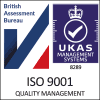Why Do I Have To PAT Test?
Why is it necessary to maintain and PAT Test electrical equipment?
Electric shock can kill or seriously injure. This is one of the hazards that electrical safety legislation is intended to protect against. Many serious shocks occur when the current flow is hand to hand, because the route the current takes is through or near the heart.
The Electricity at Work Regulations requires, in Regulation 4 (2) that:-
‘As may be necessary to prevent danger, all systems shall be maintained so as to prevent, so far as reasonably practicable such danger.’
Basically, Regulation 4 (2) is concerned with the need for maintenance to ensure safety of the system if danger would otherwise result. The quality and frequency of maintenance should be sufficient to prevent danger, so far as is reasonably practicable.
Regular inspection of equipment is an essential part of any preventative maintenance programme.
Records of maintenance, including test results, are recommended be kept throughout the working life of the equipment to enable:-
- The condition of the equipment to be monitored,
- The effectiveness of the maintenance to be assessed,
- The demonstration that the effective maintenance system is in place and
- The duty holder responsible for the inspection and testing regime to assess the future frequency required between formal visual inspections and any combined inspections and tests.
What should be maintained ?
All electrical systems and equipment should be maintained if danger would otherwise arise (see fig. 1 page 14). Other than the fixed installation, which is considered to be the installation from the meter point to the socket outlet, or fuse connection unit, all electrical equipment in an installation, whether permanently connected or connected by a plug and socket-outlet, should be inspected and tested in accordance with the recommendations contained in this ‘Code of Practice’.
The code of practice does not cover heavy plant eg air conditioning systems, these form part of a specialized maintenance and inspection routine.
The fixed installation wiring is also, not included.
‘Requirements for Electrical Installations’.
Further Guidance on the Inspection and Testing of the fixed wiring as set out in BS 7671: 2008. are given in ‘Guidance Note 3’.
If you think that The City & Guilds PAT Training Course is the course for you visit the 2377 PAT course pages for details of venues and bookings
View all PAT Testing Courses information and Venues.







